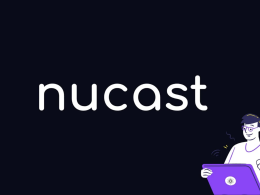Whether you’re new to the blockchain scene or you’ve been here a while, you have most likely heard about consensus mechanisms or algorithms. That’s because they are foundational to blockchain technology.
Without consensus mechanisms, it’d be almost impossible to ensure the integrity, reliability, and security of these decentralized networks.
Proof of Work, Proof of Stake, and More
In centralized systems, a single authority makes decisions. But with decentralized, distributed network systems, there’s no one person in charge. Instead, these networks need consensus mechanisms—essentially, a set of rules for how participants can participate in the network and agree on the data shared on the network.
With consensus mechanisms, the blockchain nodes can synchronize and agree on the transaction blocks to be added to the network without relying on central authorities or third parties.
Proof of Work (PoW)
The first consensus mechanism to be used in a decentralized blockchain network is Proof of Work (PoW), which Bitcoin has used since 2008. Basically, participants, also known as miners, compete to solve complex computational puzzles using powerful hardware. Once a miner finds a solution to a puzzle, they hash the block data, creating a unique fingerprint that verifies the block’s integrity. The miner who solves the puzzle first and generates a valid hash earns the right to add the block to the blockchain and receives a reward in cryptocurrency.

This process, called mining, is energy-intensive and time-consuming, but it provides robust security. It ensures that whoever adds a transaction block has expended significant effort, which is something malicious actors do not typically like to do. Theoretically, anyone can participate in mining, but because of how expensive mining hardware is, this isn’t usually the case.
PoW Alternatives
Proof of Stake (PoS) was created as a solution to PoW’s cost constraints, environmental concerns, and scalability issues. Instead of relying on computing power, PoS uses an economic approach. Participants, also known as stakers, lock up some of their crypto holdings to show their commitment to the network’s security for a chance to verify transactions and add new blocks to the blockchain.
PoS is a significantly more sustainable choice than PoW. It also enables higher transaction throughput, as it’s not as time-consuming as PoW. More participants can also partake, as staking requires less specialized hardware than mining. However, PoS still has a potential for centralization because large stakeholders could have a disproportionate influence on the network.
Other consensus mechanisms, like Proof of Capacity (PoC), Proof of Burn (PoB), Proof of Identity (PoI), Proof of Activity (PoA), and Proof of Elapsed Time (PoET), have emerged as possible alternatives to PoW. Still, PoS remains the most commonly used consensus mechanism thanks to its sustainability and energy efficiency. Ethereum, for instance, recently completed its transition from PoW to PoS, signaling that PoS is the top choice.
Proof of Stake (PoS): A Sustainable Alternative
Although there are a few variations of PoS, like Delegated Proof of Stake (DPoS) and Leased Proof of Stake (LPoS), all PoS blockchain networks at their core allow participants to validate transactions based on the number of tokens they lock up—or stake.
The tokens that participants stake act as collateral, incentivizing them to act honestly while verifying transactions and adding new blocks to the blockchain. If they act maliciously, they risk losing their staked tokens. As the participants behave honestly, they’re also increasing the network’s overall integrity.
In blockchain networks that employ PoS systems, the network randomly selects transaction validators from the stakers available based on their staked amount, ensuring a fair and decentralized process of arriving at a consensus. The more crypto you stake, the higher your chances of being selected.

Participants who validate transactions receive tokens in the form of transaction fees or newly minted cryptocurrency—proportional to their stake—as rewards for their contributions.
Since you only need to lock up your crypto tokens, PoS removes the need for energy-intensive mining, which has been a major concern in PoW systems. As opposed to PoW, PoS has a relatively easy barrier to entry, making it more able to scale more efficiently. As more users participate, the network doesn’t suffer from the same bottlenecks that often plague PoW systems. This makes PoS well-suited for applications where scalability is critical, such as decentralized finance (DeFi) and large-scale dApps.
Cardano’s Unique Implementation: The Ouroboros Protocol

One of the most notable PoS implementations is Cardano’s Ouroboros protocol, the first PoS protocol to be backed by academic research. Ouroboros is designed to be secure, decentralized, sustainable, and scalable, and it’s not just hearsay because Cardano is committed to scientific rigor for the best results.
Epochs, slots, slot leaders, and staking pools are at the core of Ouroboros.
An epoch is a fixed time, with many slots, during which new blocks are added to the chain. A Cardano Epoch typically has 432,000 slots, lasting one second each for a total of 432,000 seconds—or five days. Within each Cardano Epoch, there are 21,600 nominations: specific participants—known as slot leaders—are selected to validate transactions and create new blocks. This structure ensures that the network runs smoothly and fairly, as the selection of slot leaders is random and based on the amount of ADA (Cardano’s native cryptocurrency) they’ve staked.
The slot leaders are nominated from stake pools (a 24/7 online server node that aggregates the stakes of several participants to process transactions and produce new blocks). The more stake the pool controls, the greater the chance it has of being elected as a slot leader to produce a new block that is accepted into the blockchain. If you hold ADA but don’t want to run a stake pool, you can delegate your stake to an existing pool to increase the pool’s chance of becoming a slot leader. At the end of the day, you get to partake in the rewards.
What makes Ouroboros particularly outstanding is its focus on security. The protocol guarantees that as long as 51% of the network’s stake—in the case of Cardano, ADA—is held by honest participants, the blockchain remains secure. This is quite similar to the robust security PoW promises, especially as the randomness of the leader selection and the risk of losing staked tokens ensure that over 51% of the participants are honest.
Of course, in terms of sustainability, Ouroboros requires significantly less energy than PoW networks like Bitcoin. Cardano claims to be four million times more energy efficient than Bitcoin, making it a more sustainable and environmentally friendly option.

Besides, since running a Cardano node is not as energy or cost-intensive as running Bitcoin, Ouroboros enables Cardano to scale horizontally by adding more nodes to the network.
Despite its many strengths, Cardano has not stopped exploring improvements to address its challenges, such as maintaining a balanced distribution of stakes among stake pools. If a stake pool has too few stakeholders, it cannot act as a delegate. Conversely, stake pools with too many stakeholders receive a constant reward, making them less attractive. These mechanisms discourage both fragmentation attacks and the accumulation of too much power by any single pool.
And that’s not all. Cardano’s Ouroboros Proof of Stake protocol continues to evolve through new iterations and rigorous security analysis. As a result, it remains the leading PoS consensus mechanism and a much better alternative to energy-hungry PoW.










